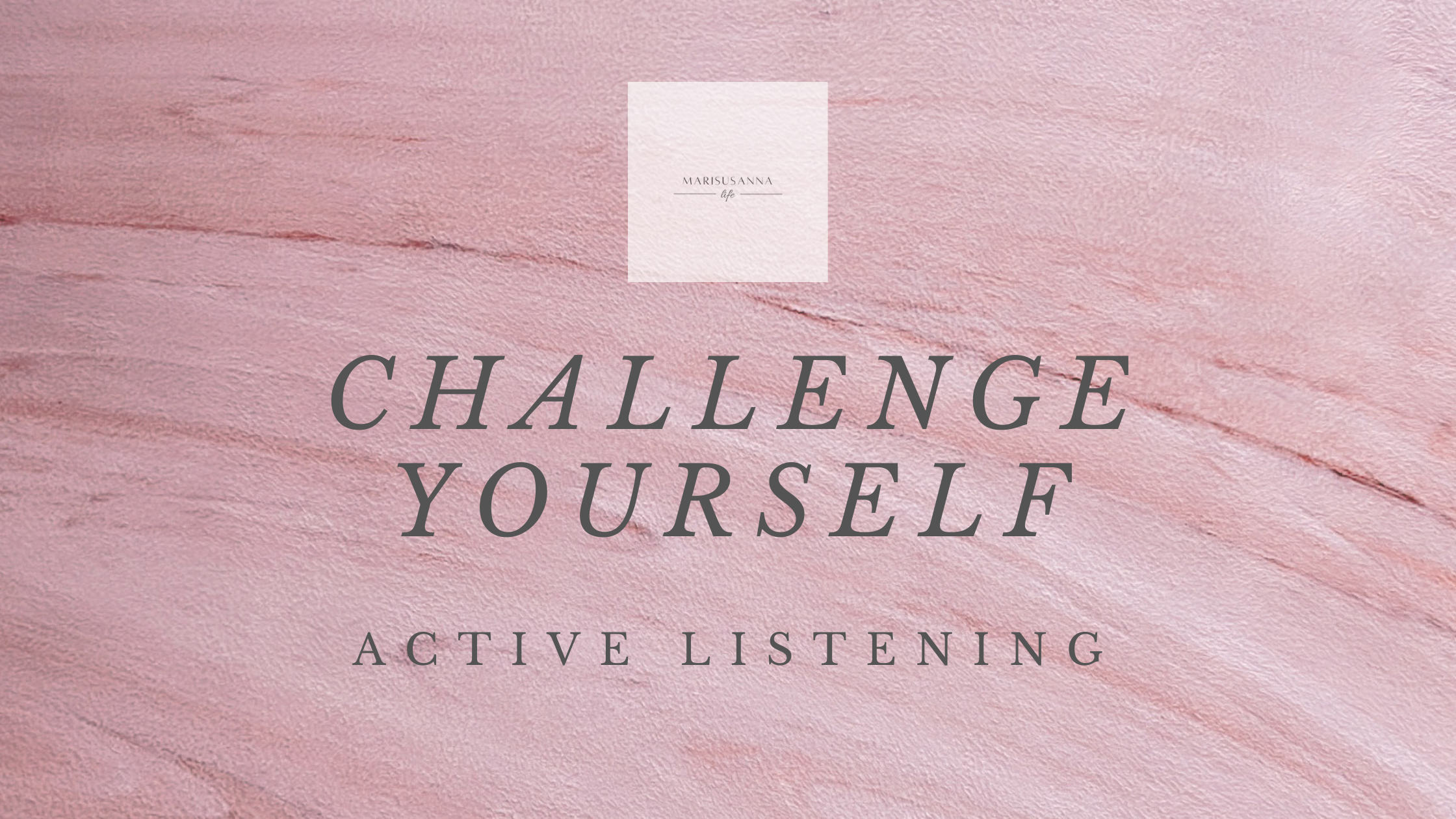Ostoskorisi on tyhjä!

Challenge Yourself – Active Listening
Are you ready to challenge yourself? Here, I give you some effective mindfulness based practices that you can start doing already today! All you need is an open mind and you’re good to go.
This week I challenge you – and myself – to practice active listening. You can do this wherever you want, at home in case you are living with someone, and if not, you can do this on the phone, at work etc. Wherever you have some social interaction, go and try this out!
What is active listening?
Active listening means listening to someone actively, in other words providing your full attention and focus on what another person is actually telling you. It is about eliminating all potential distractions, about letting go of your reactions, emotions or opinions on whatever the other person is saying. It is to simply listen without leaving any space to any assumptions or analyses.
People tend to be very reactive, and I think social media and the fast paced, self-centric lifestyle have done its part by encouraging us to focus more and more on ourselves, valuing our own emotions and reactions instead of focusing on seeing other people and their experiences as they are. We run into assumptions or conclusions almost immediately when someone starts speaking. Also, we start to think how to respond way before the person has even finished the sentence. This is just more or less how we are as human beings, but it doesn’t mean we cannot practice active listening; listening in full awareness without focusing to the next moment or anything else.
If we think about this a bit more in detailed; how can we truly listen and understand another person if we have all these expectations, assumptions and interpretations in our minds, ready to explode while listening, waiting for their turn to react? Well we can’t. That’s why we all need to learn active listening. To openly start receiving and accepting the real messages what others are communicating to us.
Why active listening is (extremely) important?
Personally, I think active listening is one of the most important skills in any kind of a relationship. Let me tell you why:
- First and most importantly, being seen, heard and understood are fundamental human needs
- You learn from others and grow as a person
- You develop deeper connections in relationships
- You understand others’ perspectives, opinions, thoughts and emotions better
- You learn to provide your full presence to another person
- And simply you remind yourself that life is not all about you
How to do it?
Then, let’s get into action. So how to listen actively? Even though this might not be easy, it is rather simple.
When someone starts speaking to you, decide from the very beginning to bring your full attention towards what you hear by eliminating all potential distractions. Decide to have an open mind and receive the information with curiosity and kindness. You can of course smile while listening, even nod, but that’s it. Make sure to let the speaker finish before saying anything back. You can think of the listening time as your time to openly learn, understand or just being present for the speaker, depending on the nature of the conversation. Once the speaker has finished, you can ensure that you have understood by summarizing or by kindly requesting some clarifications. Remember that sometimes, all you need to do is to just listen without commenting anything back.
How to know if you have done it right? Afterwards, you should have the feeling that you understood the message the speaker wanted to communicate to you. You might also notice you have learnt something new. And most importantly, after the conversation you should be confident that the speaker was heard and seen exactly the way he/she wanted to.
Let’s go and try this out!
Missed the previous challenge? Check it out here.
x Mari Susanna
Comments
Yksi vastaus artikkeliin “Challenge Yourself – Active Listening”
-
[…] Missed the previous challenge? Check it out here. […]
Vastaa